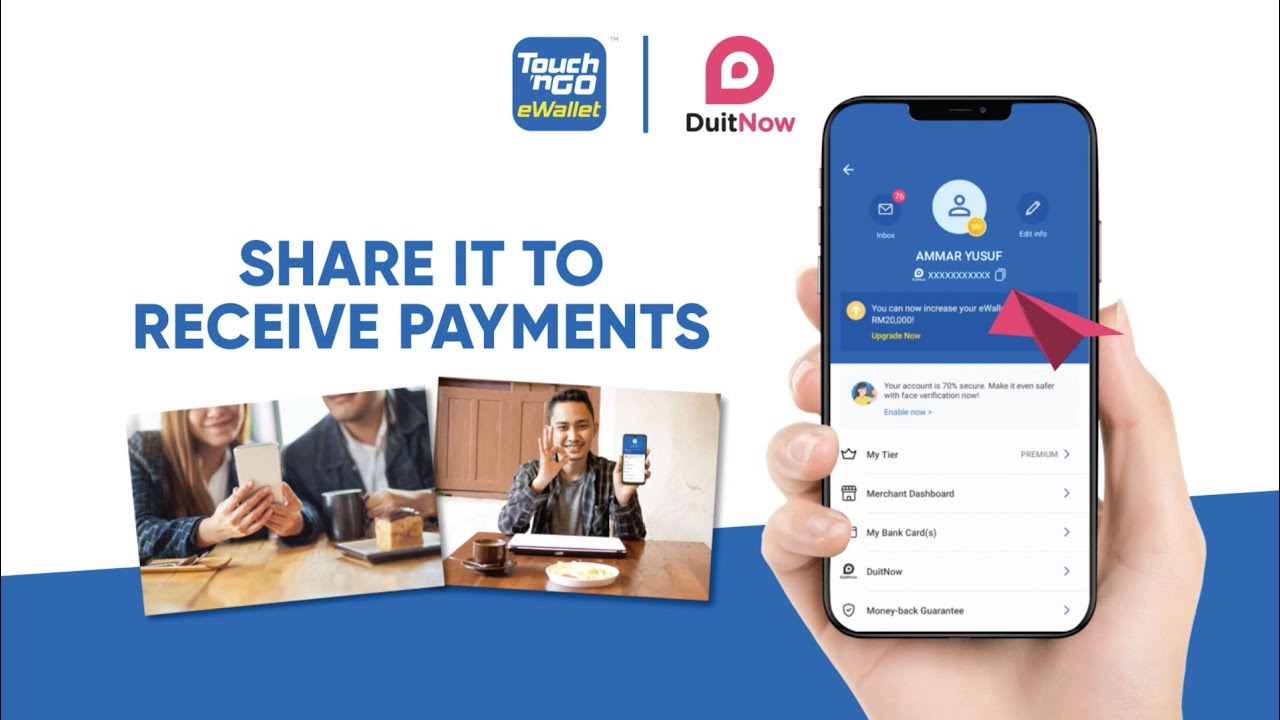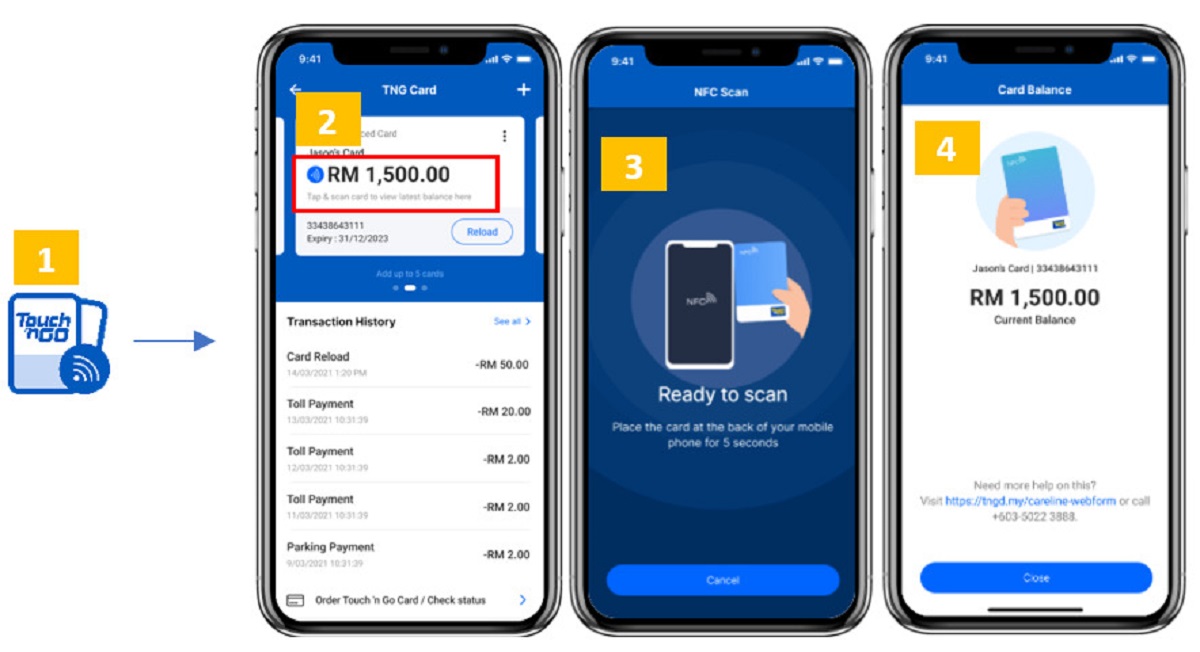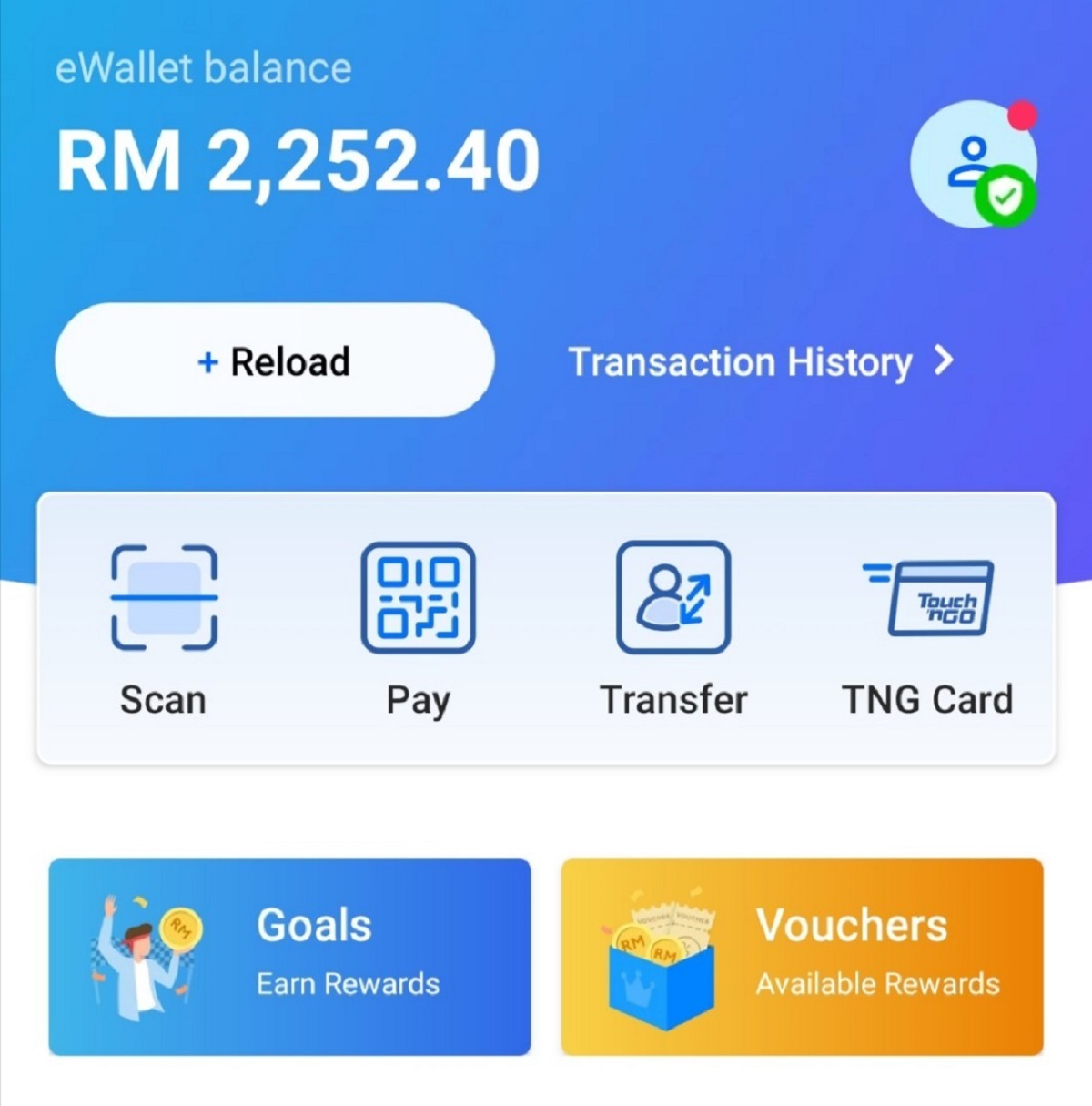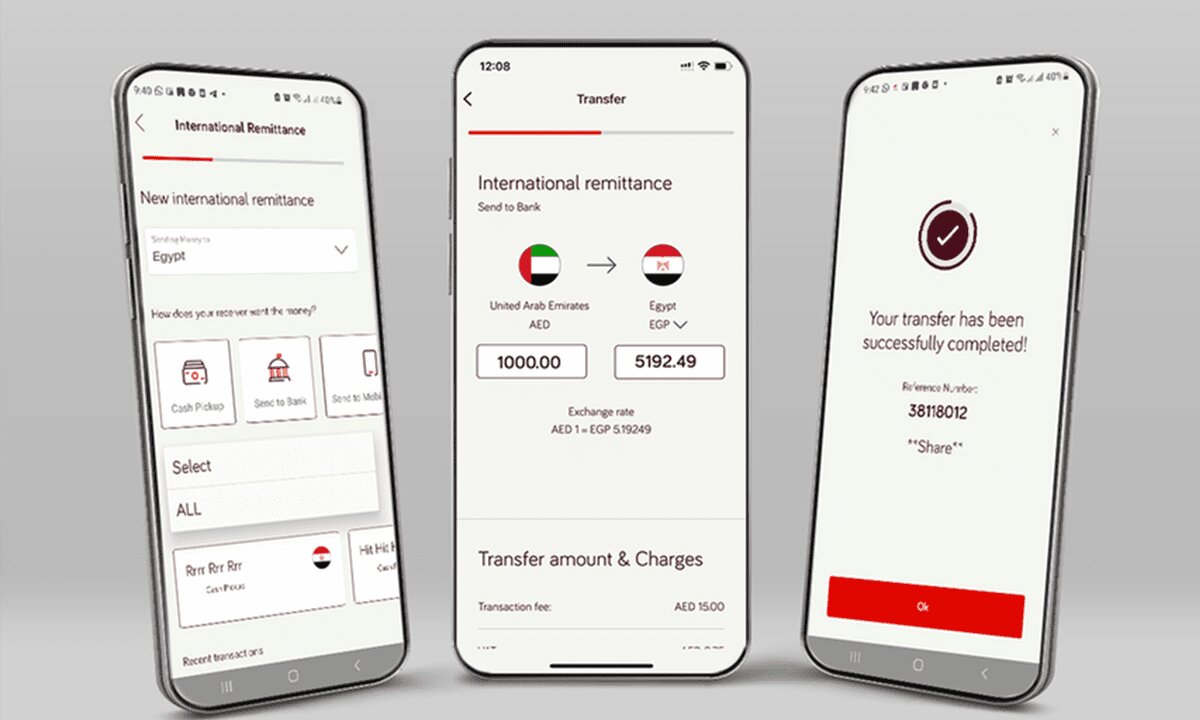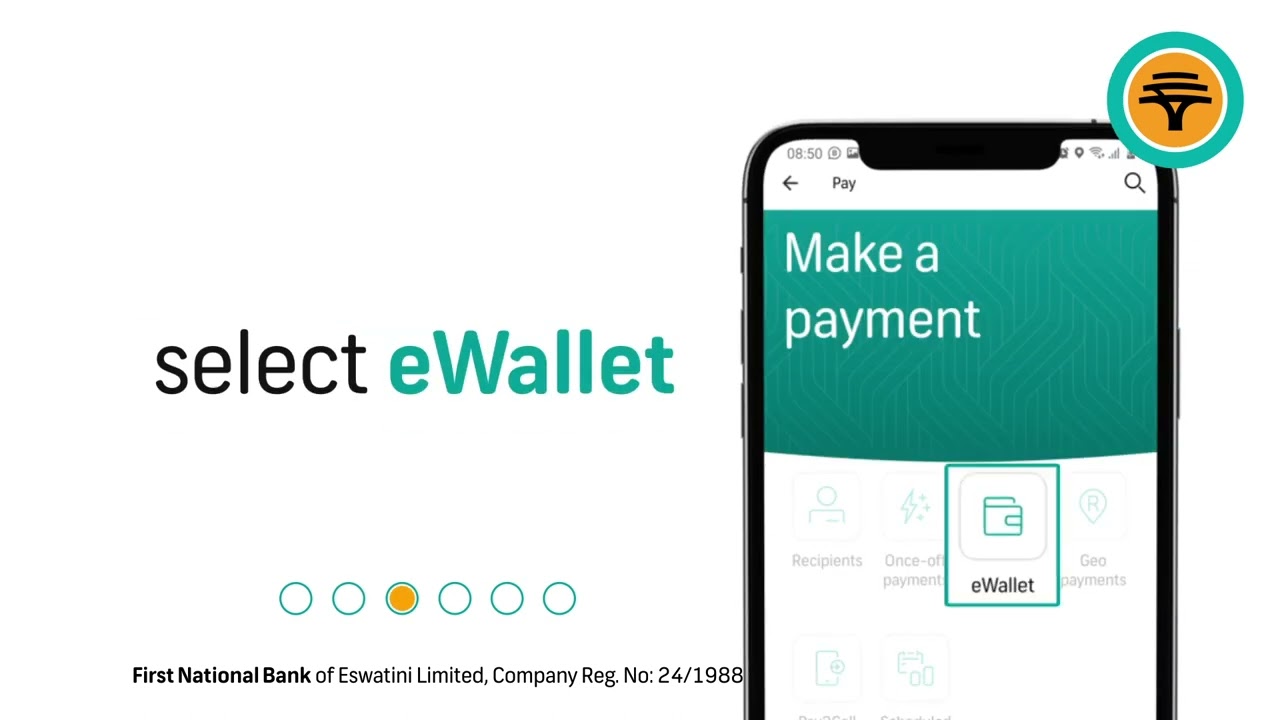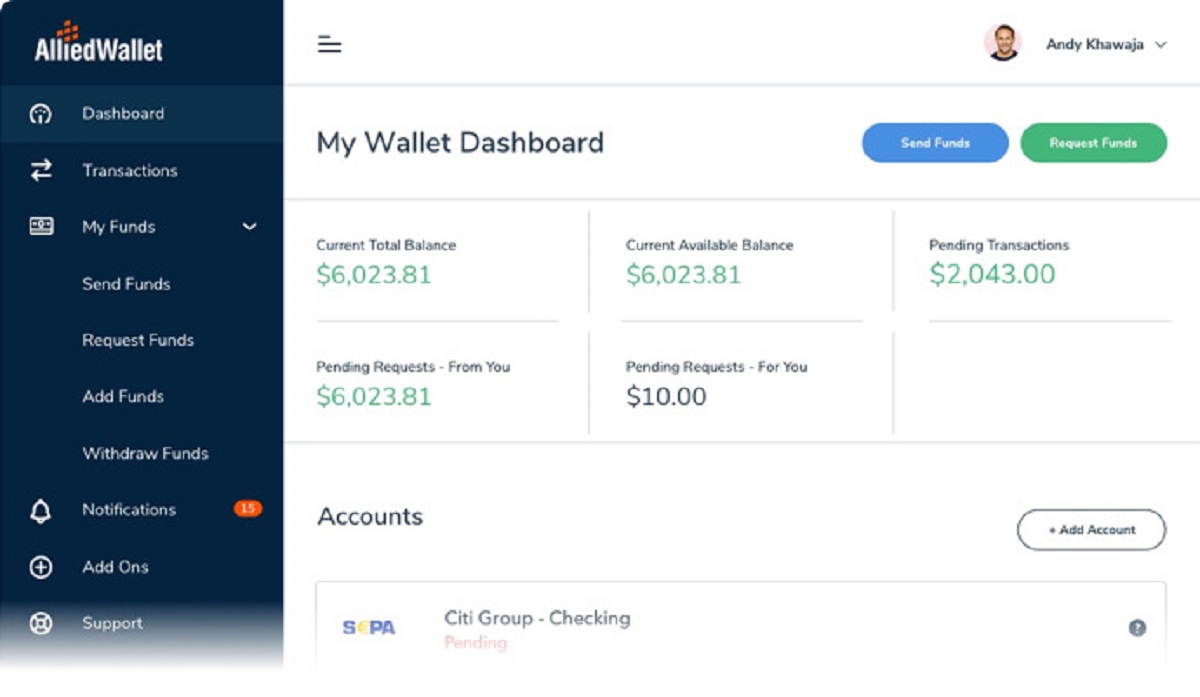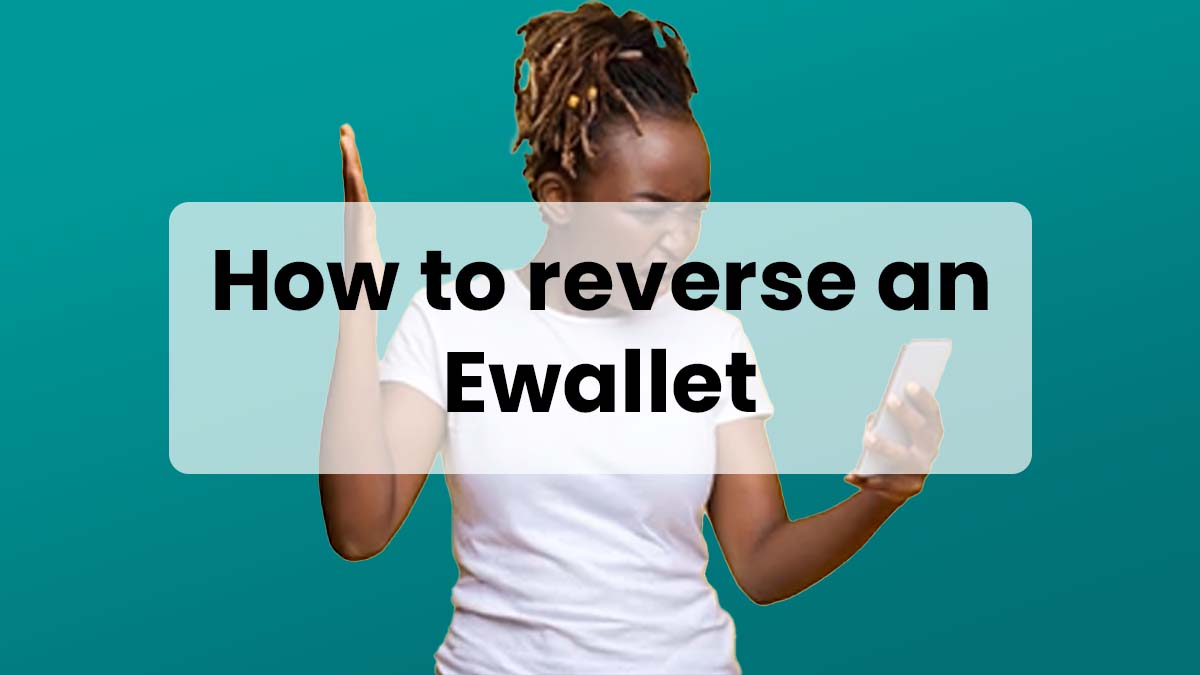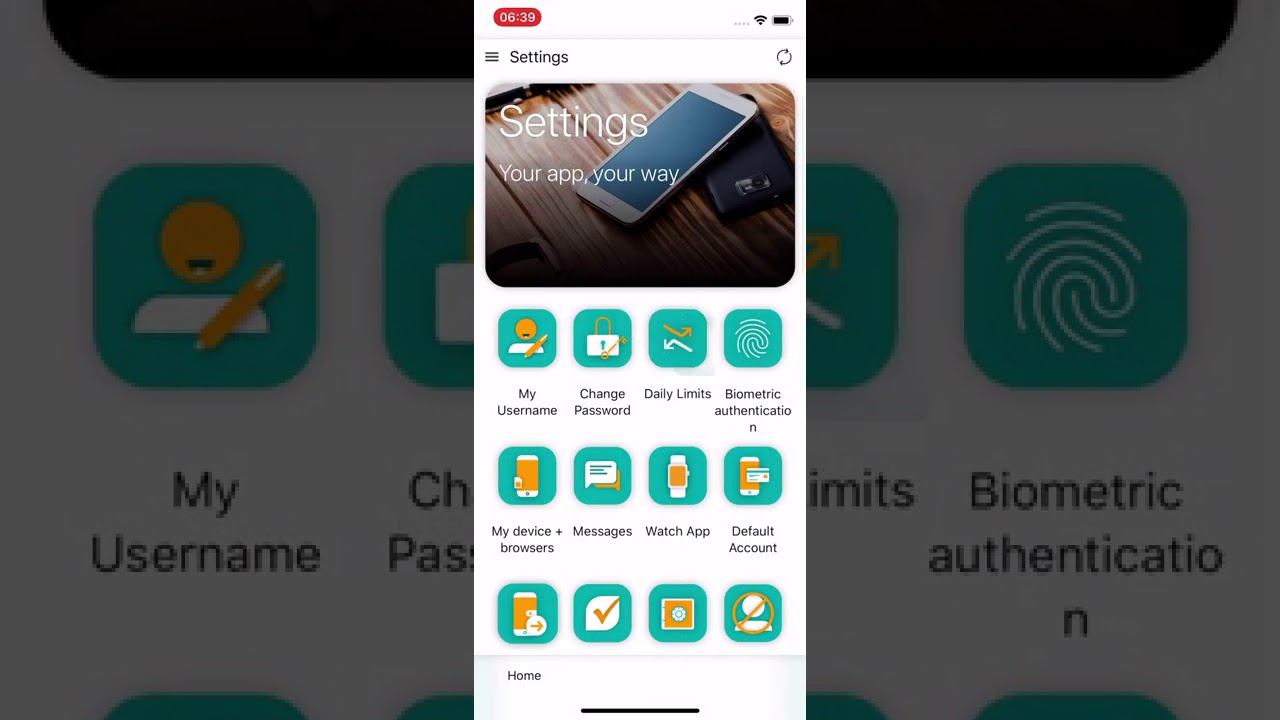What is an E-wallet?
An E-wallet, also known as a digital wallet or mobile wallet, is a virtual wallet that allows individuals to securely store and manage their digital payment information. It eliminates the need to carry cash or physical cards by digitizing them, making transactions more convenient, efficient, and secure.
An E-wallet functions as a platform where users can link their bank accounts, credit or debit cards, and even cryptocurrencies, to make various types of electronic transactions. These transactions can include online purchases, bill payments, money transfers, and even in-store purchases using mobile devices or contactless payment methods.
The E-wallet industry has experienced rapid growth in recent years due to advancements in technology and the increasing adoption of smartphones. E-wallets provide a safer alternative to traditional payment methods as they utilize encryption and tokenization techniques to safeguard personal and financial information.
Furthermore, E-wallets offer enhanced convenience by allowing users to easily access their payment information from their smartphones or other connected devices. This eliminates the need to carry multiple physical cards and speeds up the checkout process.
Additionally, many E-wallets offer loyalty programs and rewards, giving users the opportunity to earn cashback, discounts, or points for their transactions. This adds an extra incentive for users to utilize E-wallets for their payment needs.
Overall, E-wallets have revolutionized the way we make payments in today’s digital world. They provide a secure and convenient method of managing our financial transactions, making them an indispensable tool for individuals seeking safer and more efficient payment options. Whether you’re shopping online or making in-store purchases, an E-wallet can simplify and streamline your payment experience.
Benefits of Using E-wallets
The rise of E-wallets has brought about numerous benefits for users. Let’s explore some of the key advantages of using E-wallets:
1. Convenience: E-wallets offer unparalleled convenience by allowing users to make payments anytime, anywhere, with just a few taps on their smartphones. Whether you’re shopping online, paying bills, or splitting expenses with friends, E-wallets eliminate the need for physical cash or cards.
2. Security: E-wallets employ advanced security measures to protect your financial information. They often use encryption technology, tokenization, and two-factor authentication to ensure that your personal and payment data remains secure. This provides peace of mind when making transactions.
3. Speed and Efficiency: With E-wallets, transactions can be completed in a matter of seconds. There’s no need to fumble for cash or swipe cards. Simply authenticate your payment through a fingerprint, PIN, or facial recognition, and the transaction is done, saving you time and effort.
4. Organized Finances: E-wallets allow you to keep track of your spending with ease. Most E-wallets provide transaction histories and categorize your expenditures, empowering you to monitor your finances and make better budgeting decisions.
5. Rewards and Discounts: Many E-wallets offer rewards programs that let you earn points, cashback, or exclusive discounts for using their services. These incentives can add up over time, saving you money and maximizing the value of your transactions.
6. Contactless Payments: E-wallets support contactless payments, allowing you to make purchases simply by tapping your phone or scanning a QR code. This not only provides a seamless payment experience but also helps maintain hygiene by minimizing physical contact.
7. International Transactions: E-wallets often offer the ability to make international payments in different currencies, eliminating the need for currency exchanges and associated fees. This makes them a convenient option for travelers or those conducting business with international partners.
8. Eco-Friendly: By going digital and reducing the reliance on physical cards and receipts, E-wallets contribute to a more sustainable and eco-friendly way of conducting transactions.
By leveraging these benefits, E-wallets have transformed the way we handle our payments, making them an attractive choice in today’s digital economy. With their convenience, security, and numerous features, E-wallets offer an enhanced payment experience for individuals and businesses alike.
Different Types of E-wallets
E-wallets come in various forms, each catering to different user preferences and needs. Let’s explore some of the different types of E-wallets available:
1. Bank E-wallets: These E-wallets are provided by banks and are linked directly to the user’s bank account. They offer seamless integration with existing banking services, allowing users to manage their finances and make transactions within the same platform.
2. Independent E-wallets: Independent E-wallets are standalone platforms that are not affiliated with any specific bank. They often offer a wide range of features, such as person-to-person transfers, bill payments, and mobile top-ups, making them versatile options for users.
3. Merchant-specific E-wallets: Some E-wallets are designed to be used exclusively at specific merchants or within a specific ecosystem. These E-wallets often provide exclusive discounts, loyalty programs, and other incentives within their designated network.
4. Mobile Network Operator E-wallets: Mobile Network Operator E-wallets are offered by telecommunications companies. These E-wallets leverage the existing infrastructure of the mobile network operator, allowing users to make payments, send money, and perform other transactions using their mobile phone accounts.
5. Cryptocurrency Wallets: Cryptocurrency wallets enable users to securely store and manage their digital currencies. These wallets can hold various types of cryptocurrencies and provide functionalities like sending and receiving coins, tracking holdings, and monitoring market prices.
6. Closed-loop E-wallets: Closed-loop E-wallets are limited to specific merchants or brands. They typically store prepaid value for use within a specific network, such as a university campus, amusement park, or retail chain.
7. Hybrid E-wallets: Hybrid E-wallets combine multiple functionalities, often offering a combination of bank account integration, person-to-person transfers, bill payments, and mobile payments. These E-wallets provide a comprehensive set of features to cater to various user needs.
It’s important to consider your specific requirements and preferences when choosing an E-wallet. Take into account factors such as convenience, security, available features, and compatibility with your devices and preferred payment methods. By selecting the right type of E-wallet, you can optimize your payment experience and enjoy the benefits of a digital wallet that aligns with your needs.
Security Measures for E-wallets
Ensuring the security of your E-wallet is crucial to protect your personal and financial information from unauthorized access and fraud. Here are some of the essential security measures implemented by E-wallet providers:
1. Encryption: E-wallets use encryption technology to encrypt sensitive data. This ensures that your personal and payment information is scrambled and can only be decrypted by authorized parties, making it extremely difficult for hackers to access your data.
2. Biometric Authentication: Many E-wallets offer biometric authentication methods such as fingerprint or facial recognition. These features provide an additional layer of security by ensuring that only you can access your E-wallet. Biometric data is unique to each individual and difficult to replicate, making it a strong security measure against unauthorized access.
3. Tokenization: Tokenization is used to replace your sensitive data, such as credit card numbers, with unique identifiers called tokens. These tokens are used for transactions, ensuring that your actual payment details are not exposed. Even in the case of a data breach, the stolen tokens are essentially useless to the attacker.
4. Two-Factor Authentication: Implementing two-factor authentication (2FA) adds an extra layer of security to your E-wallet. In addition to your password or PIN, 2FA requires an additional verification step, such as a unique code sent to your mobile device or email, to authenticate your identity. This ensures that even if someone gets hold of your password, they cannot access your E-wallet without the second factor.
5. Device Verification: E-wallets often require device verification as an added security measure. This ensures that your E-wallet can only be accessed from authorized devices. If your E-wallet is accessed from an unfamiliar or unauthorized device, additional verification or blocking measures may be triggered.
6. Transaction Notifications: E-wallets send real-time notifications to users for every transaction made using their account. This allows users to quickly verify the transactions and detect any unauthorized activities. If any suspicious or unauthorized transactions are identified, users can report them to the E-wallet provider for immediate action.
7. Regular Updates and Patches: E-wallet providers regularly release updates and patches to address potential security vulnerabilities. It is essential to keep your E-wallet app updated to benefit from the latest security enhancements and ensure that known vulnerabilities are patched.
8. Customer Support and Fraud Detection: E-wallet providers have dedicated customer support teams that are well-equipped to handle fraud-related issues. They continuously monitor user accounts, employ fraud detection algorithms, and provide assistance to users in case of any security concerns or suspicious activities.
By implementing these security measures, E-wallet providers prioritize the protection of your personal and financial information. However, it is also important for users to practice good security habits, such as using strong and unique passwords, not sharing login credentials, and being cautious of phishing attempts. By combining strong security measures with responsible user behavior, the safety and integrity of your E-wallet can be effectively maintained.
Steps to Check for E-wallet Availability
If you’re interested in using an E-wallet for your day-to-day transactions, here are some steps you can follow to check for E-wallet availability:
1. Research: Start by researching the different E-wallet options available in your region or country. Look for popular E-wallet providers and compare their features, security measures, and user reviews to determine which ones align with your needs.
2. Check App Stores: Visit the app stores associated with your mobile device operating system – Google Play Store for Android users and the Apple App Store for iOS users. Search for the E-wallets you identified during your research and check if they are available for download in your country.
3. Read App Descriptions: Review the app descriptions, features, and user ratings of the E-wallets on the app stores. This will give you an idea of the functionality and user experience each E-wallet offers. Look for specific features that you may require, such as compatibility with your preferred payment methods or support for loyalty programs.
4. Check System Requirements: Confirm that your device meets the system requirements for the E-wallet app you’re interested in. Some E-wallets may have specific compatibility requirements, such as minimum operating system versions or device specifications. Ensure that your device meets these requirements to ensure a smooth user experience.
5. Review User Feedback: Look for user reviews and ratings of the E-wallets you’re considering. Pay attention to any positive or negative feedback regarding ease of use, security, customer support, and overall satisfaction. This can provide valuable insights into the quality and reliability of each E-wallet.
6. Check E-wallet Websites: Visit the official websites of the E-wallet providers you’re interested in. Often, E-wallet websites provide detailed information about the features, security measures, supported platforms, and supported banks. Verify if the E-wallet supports the services you intend to use, such as online shopping, bill payments, or money transfers.
7. Contact Your Bank: If you already have a bank account, check if your bank offers its own E-wallet. Many banks provide their customers with E-wallet solutions that seamlessly integrate with their existing banking services. Contact your bank or visit their website to inquire about the availability and benefits of their E-wallet.
8. Seek Recommendations: Reach out to friends, family members, or colleagues who are already using E-wallets. Ask them for their recommendations based on their personal experiences. Their insights can provide useful guidance in choosing the right E-wallet for your needs.
By following these steps, you can thoroughly assess the availability and suitability of different E-wallet options. Take your time to evaluate the features and security measures of each E-wallet to ensure that your chosen E-wallet meets your requirements for convenience, security, and functionality.
Checking for E-wallet Compatibility with Your Device
Before choosing an E-wallet, it’s essential to check if it is compatible with your device. Here are some steps to ensure compatibility:
1. Operating System: Determine the operating system of your device. E-wallet apps are typically designed for specific operating systems like Android or iOS. Ensure that the E-wallet you’re interested in is compatible with your device’s operating system.
2. App Store: Go to the app store associated with your device’s operating system – Google Play Store for Android or the Apple App Store for iOS. Search for the E-wallet app by its name. If the app is available for download, it is likely compatible with your device.
3. System Requirements: Check the system requirements of the E-wallet app listed on the app store or the official website. Ensure that your device meets the minimum requirements, such as the required operating system version and available storage space.
4. Compatibility Check Tools: Some E-wallet providers offer compatibility check tools on their websites. Visit the official website of the E-wallet you’re interested in and look for any compatibility check tools or information. These tools will help you determine if your device is compatible.
5. User Feedback: Read user reviews and feedback on the app store or online forums. Users often share their experiences regarding the compatibility of the E-wallet app with different devices. Look for feedback from users who have devices similar to yours to get a better idea of compatibility.
6. Device Updates: Ensure that your device is updated to the latest operating system version. E-wallet apps may require specific software updates to function properly. Keeping your device up to date will help avoid compatibility issues.
7. Contact E-wallet Support: If you’re unsure about the compatibility of an E-wallet with your device, reach out to the E-wallet’s customer support. They can provide information and assistance regarding compatibility or any specific device requirements.
Ensuring compatibility between your device and the chosen E-wallet is crucial for a seamless and user-friendly experience. By following these steps, you can confidently select an E-wallet that is compatible with your device’s operating system and meets the necessary requirements.
Finding E-wallet Apps on App Stores
If you’re looking to find E-wallet apps to download and use, the most convenient place to search is on the respective app stores. Here are the steps to find E-wallet apps on app stores:
1. Open the App Store: Depending on your device’s operating system, open either the Google Play Store for Android devices or the Apple App Store for iOS devices. These app stores are pre-installed on your device.
2. Search for E-wallet Apps: Use the search feature within the app store and type in keywords, such as “E-wallet”, “mobile wallet”, or the specific name of the E-wallet you are interested in. Hit the search button to begin the search.
3. Browse Search Results: The app store will display a list of search results related to E-wallet apps. Carefully review each app’s name, logo, ratings, and user reviews to find the most suitable options.
4. Read App Descriptions: Click on an E-wallet app to view its detailed description. App descriptions provide information about the app’s features, security measures, and compatibility requirements. Make sure to read the app’s description thoroughly to gain a better understanding of the app’s capabilities.
5. Check Ratings and Reviews: Ratings and reviews left by other users can give you valuable insights into the E-wallet app’s performance, user experience, and overall satisfaction. Take these ratings and reviews into consideration when evaluating the app’s reliability.
6. Look for Key Features: Browse through the app’s description and look for key features that are important to you. Consider factors such as security measures, compatibility with your preferred payment methods, loyalty programs, and user-friendly interfaces.
7. Verify App Developer: Pay attention to the app developer’s name and reputation. Trusted and reputable developers are more likely to provide reliable and secure E-wallet apps. Research the developer’s reputation outside of the app store if necessary.
8. Download and Install: Once you have decided on an E-wallet app, click on the “Install” or “Get” button to download and install the app on your device. Follow the on-screen instructions to complete the installation process.
By following these steps, you can easily find and download E-wallet apps from the app stores. Remember to research and evaluate each app carefully before making your final selection to ensure it aligns with your requirements for security, features, and user experience.
Verifying if Your Bank Supports E-wallets
If you’re considering using an E-wallet, it’s important to verify whether your bank supports E-wallets. Here are the steps to confirm if your bank provides E-wallet support:
1. Visit Your Bank’s Website: Go to the official website of your bank. Look for a section related to digital banking or payment services. This section may provide information about the bank’s E-wallet offerings or partnerships with E-wallet providers.
2. Contact Customer Support: Reach out to your bank’s customer support through their hotline or online chat. Ask them if they offer an E-wallet service or have partnerships with E-wallet providers. The customer support team can provide you with accurate and up-to-date information about their E-wallet offerings.
3. Check Online Banking Features: Log in to your online banking platform and explore the available features. Look for any options or sections related to E-wallets or mobile payments. Some banks integrate their E-wallet services directly into their online banking platforms.
4. Inquire at Local Branch: If you prefer an in-person interaction, visit your bank’s local branch. Speak to a bank representative and inquire about their E-wallet services. They can provide you with information about the available options, how to sign up, and any associated fees or requirements.
5. Research Bank Partnerships: Some banks may not offer their own E-wallets but have partnerships with specific E-wallet providers. Research if your bank has any such partnerships. This information can usually be found on the bank’s website or by contacting customer support.
6. Check Bank Notifications: Keep an eye out for any communications or announcements from your bank regarding E-wallet services. Banks often inform customers about new services and partnerships through email or push notifications within their banking app.
7. Explore Mobile Banking App: If your bank has a mobile banking app, download and explore its features. Look for any sections or options related to E-wallets or mobile payments. Banks may integrate their E-wallet services into their mobile apps for easy access and management.
8. Research Bank Policy: If you can’t find any information about E-wallet support on your bank’s website or through the previous steps, consult your bank’s terms and conditions. Look for specific policies related to digital payments, mobile wallets, or third-party integrations.
By following these steps, you can verify if your bank provides E-wallet support. If your bank does support E-wallets, you can evaluate their offerings and determine if they meet your requirements for convenience, security, and functionality. If your bank doesn’t support E-wallets, you can explore other E-wallet options provided by independent E-wallet providers.
Considering Other Factors before Choosing an E-wallet
When choosing an E-wallet, there are several factors to consider beyond bank support and basic compatibility. Here are some additional factors to keep in mind before making your decision:
1. Security: Evaluate the security measures implemented by the E-wallet provider. Look for features such as encryption, two-factor authentication, and biometric verification to ensure the safety of your personal and financial information.
2. User Interface and Experience: Consider the user interface and overall user experience of the E-wallet app. Look for an intuitive layout, easy navigation, and smooth performance. A user-friendly interface can enhance your overall satisfaction with the E-wallet.
3. Available Features: Review the features offered by the E-wallet. Consider functionalities such as person-to-person transfers, bill payments, loyalty programs, and integration with other services like ride-sharing or online shopping platforms. Choose an E-wallet that provides the features you require for your payment needs.
4. Compatibility with Payment Methods: Confirm if the E-wallet supports your preferred payment methods. Some E-wallets are linked only to certain banks or card networks, so ensure that your payment methods are compatible with the E-wallet you choose.
5. Transaction Limits and Fees: Look into the transaction limits and fees associated with the E-wallet. Some E-wallets may have restrictions on transaction amounts or charge fees for certain types of transactions. Evaluate these limits and fees to ensure they align with your usage patterns and financial needs.
6. Customer Support: Research the quality and availability of customer support provided by the E-wallet provider. Consider factors such as response time, accessibility through multiple channels, and the overall reputation of their customer support team. Reliable customer support can be valuable in resolving any issues that may arise.
7. Cross-Platform Availability: If you use multiple devices or platforms, ensure that the E-wallet is available and compatible across all of them. This will allow you to access and manage your E-wallet seamlessly regardless of the device you are using.
8. Reputation and Trustworthiness: Consider the reputation and trustworthiness of the E-wallet provider. Research the company’s history, user reviews, and any news regarding security breaches or data mishandling. Choose an E-wallet provider that has a strong reputation and track record in the industry.
9. Backup and Recovery Options: Check if the E-wallet provides backup and recovery options in case your device is lost, stolen, or damaged. Look for options such as backup to the cloud, account recovery processes, or emergency features to secure your funds and account in unforeseen circumstances.
By considering these additional factors, you can choose an E-wallet that aligns with your specific needs and requirements. Taking the time to thoroughly evaluate these factors will ensure that you select an E-wallet that provides a secure, convenient, and user-friendly payment experience.
Conclusion
E-wallets have transformed the way we handle financial transactions, offering convenience, security, and efficiency. By digitizing our payment information, these virtual wallets have made it easier to make purchases, transfer money, and manage our finances.
In this article, we explored the concept of E-wallets and their benefits. We discussed the different types of E-wallets available, such as bank E-wallets, independent E-wallets, and merchant-specific E-wallets. It’s important to consider the security measures implemented by E-wallet providers to protect our personal and financial information.
We also provided step-by-step guidance on how to check for E-wallet availability, ensuring compatibility with your device and verifying if your bank supports E-wallets. Additionally, we highlighted the importance of considering other factors such as security, user experience, available features, compatibility with payment methods, transaction limits, customer support, reputation, and backup options.
Ultimately, the choice of an E-wallet depends on your individual needs, preferences, and priorities. By conducting thorough research, evaluating options, and considering the key factors mentioned, you can select an E-wallet that suits your requirements and enhances your payment experience.
Remember to always prioritize security and choose E-wallets that employ advanced encryption, offer two-factor authentication, and have a trustworthy reputation. Regularly update your E-wallet app and follow best practices for online security to ensure a safe and secure payment experience.
With the increasing popularity of E-wallets and the continuous advancements in technology, these digital wallets are likely to play an even more significant role in the future of payment systems. Embrace the benefits of E-wallets and enjoy the convenience and security they offer for your financial transactions.







